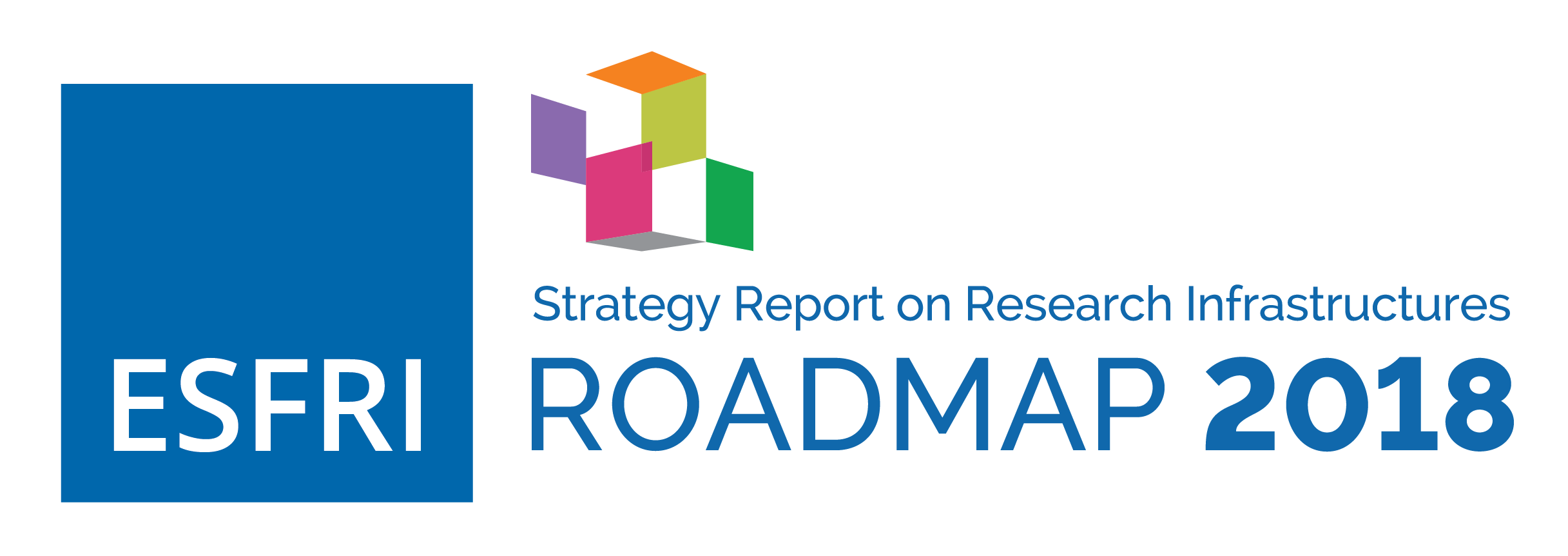Analytical Physics
Analytical Research Infrastructures primarily comprise powerful sources of photon or particle beams. Light sources based on electron accelerators with storage rings for Synchrotron Radiation or Free-Electron Lasers provide brilliant soft to hard X-ray beams enabling nanoprobes of the structure and chemical composition of materials, including trace analysis down to ppb concentration, over many length scales – from atomic to macroscopic (10-10 - 10-1 m) – and time scales – from femtoseconds (fs, 10-15 s for FELs) or picoseconds (ps, 10-12 s for SR) to milliseconds (ms, 10-3 s) or steady states. Neutron Scattering sources based on proton accelerators or nuclear reactors provide unique and complementary probes of the structure of materials, particularly for light elements such as H and subtle magnetism, and lower energy scales for slow dynamics – typically ~μs. Moreover, the neutrons constitute, because of their high penetration power, a single probe for analysis on large volumes, or non-destructively on small internal volumes in an industrial piece for example.
The broadly distributed laser spectroscopy, high resolution Electron Microscopy and High Magnetic Field facilities also operate as ARIs. EM complements SR, FELs and NS, probing down to 50 picometers (pm, 10-12 m) spatial resolutions with element specificity, comparable energy resolution (10 meV or less) and temporal resolutions that can approach 10 fs. Laser RIs probe or manipulate matter with ultra-short or ultra-high intensity pulses from ~ 100 attoseconds (as, 10-18 s) to 100 fs with millijoule (mJ) to tens of joule (J) energies, or cover the complementary time-energy region up to 10 kilojoule (kJ) and 10 nanosecond (ns, 10-9 s). Materials may also be manipulated using HMFs to provide unique insights into electronic and magnetic phenomena.
The very broad range of analytic capabilities provided by ARIs provides an equally broad range of drivers across many areas of fundamental and applied science: structure and function of biological macromolecules implicated in disease and therapy; materials for cleaner, greener transport, energy and chemical synthesis; complex electronic and magnetic materials, for next generation ICT; synthesis and performance of materials during manufacture and under operando conditions; environmental systems and planetary science; and climate, natural and cultural heritage artefacts.
Integration of European ARIs is occurring at different levels, impacting materials science and nanoscience both for fundamental research and for innovation: the CERIC-ERICCentral European Research Infrastructure Consortium CERIC ERIC http://www.ceric-eric.eu/ is a distributed RI providing access to fine analysis with complementary methods – electrons, neutrons, X-rays, synchrotron-light; the EU IA Initiative NFFA-EuropeNFFA-Europe http://nffa.eu offers integrated access to nano-foundry, characterization, theory and fine analysis at major European facilities and research institutions.
Current Status
SYNCHROTRON RADIATION AND FREE ELECTRON LASER FACILITIES
There are currently twelve SR facilities and six FELs open for transnational access across Europe ( and ). Among SR facilities most have storage ring energies of 3 GeV and are among the best in class in the world – while the ESFRI Landmark ESRF EBS (European Synchrotron Radiation Facility Extremely Brilliant Source) have helped maintain it as best in class of any SR facility in the world and the 6 GeV facility PETRA III has also undergone extensive upgradesPETRA http://photon-science.desy.de/facilities/petra_iii/index_eng.html. Most recently, Europe has seen first operations of the MAX IV FacilityMAX IV https://www.maxiv.lu.se/ based on novel, disruptive MultiBend Achromats (MBA) technology for the storage ring that will offer unprecedented brightness and coherence. The ESFRI Landmark ESRF EBS will provide 100-fold increase in brilliance and coherence – significantly closer to the physical (diffraction) limit for hard X-rays – by 2019 through a MBA upgrade, several other national facilities also plan MBA upgrades in the period 2020-2025. Complementary improvements in detector technology have also been transformative, while accelerated throughput and increased remote access in techniques such as crystallography, and construction of more beamlines at some national facilities helps meet the increasing demand for access.
The ESFRI Landmark European XFEL (European X-Ray Free-Electron Laser) and SwissFELSwissFEL https://www.psi.ch/swissfel/ are hard X-ray FEL facilities that saw their first experiments in 2017, complementing a suite of complementary IR, UV or soft X-ray FEL user facilities already in operation. The TARLA facility is being built in Turkey and further projects are planned (MAX IV-FEL, POLFEL).
CALIPSOplusCALIPSOplus http://www.calipsoplus.eu/ supports co-ordinating activity for SR and FEL facilities, overlapping with the remit of the European Cluster of Advanced Laser Light Sources (EUCALL)EUCALL https://www.eucall.eu/. The League of European Accelerator-based Photon Sources (LEAPS)LEAPS https://leaps.desy.de/ co-ordinates activity for SR and FEL facilities, FEL activities join forces in the consortium FELs of EuropeFELs of Europe https://www.fels-of-europe.eu/ and the EC funded the PaNdataPaNdata http://pan-data.eu/initiative for integrated data infrastructure for European photon and neutron facilities, and for the future EOSC is under discussion.
NEUTRON SCATTERING FACILITIES
Thirteen NS facilities operate in Europe, comprising two world-leading sources – the ESFRI Landmark ILL (Institut Max von Laue-Paul Langevin), and the accelerator-based ISIS neutron and muon FacilityISIS Muon and Neutron Source https://www.isis.stfc.ac.uk/Pages/home.aspx − and an array of high quality medium flux facilities (). This landscape will change greatly in the next decade: the future neutron source for Europe, the ESFRI Landmark European Spallation Source ERIC begins its user program on world-leading instruments initially planned for 2023 while two reactor-based facilities – BER-IIResearch Reactor BER II https://www.helmholtz-berlin.de/quellen/ber/ber2/index_en.html and Orphée-LLBOrphée-LLB http://www-llb.cea.fr/en/Web/hpr_web/HPRWEB1.php – will stop in 2019. ILL whose current agreement between the partners expires in 2023, is one of the key facilities to maintain at a very high level the European community of neutron scientists and users, especially before ESS reaches its nominal operation. These evolutions of the European neutron landscape will lead to a significant shortfall in the provision of neutron facilities relative to needs from the start of the next decadeNeutron scattering facilities in Europe - Present status and future perspectives Author. ESFRI Physical Sciences and Engineering Strategy Working Group - Neutron Landscape Group, ESFRI Scripta Volume 1, 2016 http://www.esfri.eu/sites/default/files/u4/NGL_CombinedReport_230816_Complete%20document_0209-1.pdf. EC currently supports such facilities, including integrating activity, through SINE2020ENSA Brochure, 2017 https://www.sine2020.eu/news-and-media/ensa-brochure---second-edition.html.
ELECTRON MICROSCOPY FACILITIES
About 100 mid- to high-end EM instruments operate in Europe (most of which include aberration correction of the probe forming or imaging optics). From these 15 leading laboratories and some SMEs form a networked infrastructure, ESTEEM2 (FP7)ESTEEM 2 http://esteem2.eu/, to be replaced by ESTEEM3 (H2020). An EU Design Study (DREAM) to explore the creation of a pan-European Research Infrastructure for advanced EM at a scale similar to SR and Neutron facilities is being planned, including two of the highest spatial resolution microscopes in the world (at JuelichER-C http://www.er-c.org/centre/centre.htm and HarwellHarwell ePSIC http://www.diamond.ac.uk/Science/Integrated-facilities/ePSIC.htmlHarwell eBIC http://www.diamond.ac.uk/Science/Integrated-facilities/eBIC.html) and several instruments capable of providing sub 10 meV energy resolution (DaresburySuperSTEM-Daresbury http://www.superstem.com/ and OrsayOrsayLPS-Orsay http://www.lps.u-psud.fr). The recent development of direct electron detectors has helped to revolutionise the use of cryo-EM in structural biology, with an exponential growth in installations that increasingly complement X-ray protein crystallography, and in the physical sciences through faster frame-rates and significantly improved detector resolution.
HIGH PERFORMANCE LASERS
Laser RIs are distributed across Europe with user access and joint R&D coordinated mainly through the EU integrated Initiative Laser- Lab IV (LLIV)LASERLAB https://www.laserlab-europe.eu with 33 organisations from 16 countries and also part of EUCALL. The ESFRI Landmark ELI, which aims to host the highest performance laser systems worldwide, is currently developing at three sites with complementary capability to each other and the rest of LLIV: the ELI-ALPSELI-ALPS https://www.eli-hu.hu pillar combines USP and UHI at very high repetition rates; the ELI Beamlines pillarELI-BEAMS https://www.eli-beams.eu will provide ultra-short secondary radiation (X and γ-rays) and particle (electrons,ions) sources; ELI-Nuclear PhysicsELI-Nuclear Physics http://www.eli-np.ro offers a unique combination of the most powerful laser sources worldwide (2 x 10 PW) with a fully tuneable γ-ray source (up to 19.5 MeV).
HIGH MAGNETIC FIELDS
All high magnetic field activities in Europe are organised through the ESFRI Landmark EMFL facilities, with a common user access program, outreach, training and technical developments. Maximum field strengths are increasing, with two hybrid magnets designed to exceed 43 Tesla (T) field, under commissioning in 2018 (Grenoble and Nijmegen) while in Toulouse, a semi-destructive pulsed field installation now offers fields of 100-200 T. All HMF facilities have been either fully renewed since 2000 or have had major upgrades and are internationally competitive. Two of them are directly coupled to a THz FEL (Nijmegen and Dresden), allowing unique joint operation.
GENERAL
European activity should also be considered as part of a network of global partnerships, both among our nearest neighbours (for example Russia, which has a number of existing and planned facilities available for international users such as the IBR-2 reactorIBR-2 reactor http://ibr-2.jinr.ru and the support of the Commision through the Cremlin projectCremlin project https://www.cremlin.eu/project, as well as the middle East with initiatives such as SESAMESESAME http://www.sesame.org.jo/sesame.
A summary of the main Analytical Research facilities representing the Analytical Physics Landscape is reported in Figure 5 and ESFRI contribution in Figure 6.

Figure 5. Main Research Infrastructures in Analytical Physics

Figure 6. Space and time domain of investigation of ESFRI Projects and Landmarks in Analytical Physics
Gaps, challenges and future needs
Brighter sources and faster detectors produce larger, often more complex data sets that are becoming more challenging to process and analyse, both during the experiment to make informed decisions about how best to proceed, and afterwards, increasingly across multiple probes. This requires not only significant investment in hardware to transfer, store and process data but also coherent development of software with greater exploitation of AI techniques, and many more people – data scientists – expert in such methods.
Many ARIs require more powerful, compact accelerator sources and better detectors, both of which could involve highly synergic collaborations across types of RIs. There are technical challenges specific to individual types of ARI: diffraction limited storage rings for SR for harder X-rays offering coherent imaging down to 10’s of nm, and study of fluctuations to 100 ps; new medium-power high-brilliance NS installations; coherent pulsed sources for EM that operate in both stroboscopic and single shot modes, also requiring detector development. Improvements to high performance lasers will require new materials for robust optical components, a new generation of online, single-shot, in situ diagnostics of the laser fields, to control the experimental environment fully, and increase laser peak power at least 100 times by shortening pulses or superposing beams from several sources to create and study electron-positron pairs from the vacuum. For HFM, co-ordinated development across RIs (CERN, NS, etc.) is needed to develop a 30+ T high Tc superconducting (HTSC) magnet and address the very high electricity costs of operation, as well extend fields to the region 55-60 T, closer to the point where charge carriers in HTSC materials decouple.
Increasing demand for SR facilities could be met over the next decade through the upgrade of existing facilities and building additional national or regional facilities. Exploitation of complementary FEL facilities is still at a relatively early stage but likely to grow strongly in this period. A co-ordinated European plan to provide sufficient NS capacity before the ESS ramps up should be developed. The very strong growth in demand for Cryo-EM will require an increase in the number of instruments and the development of higher throughput methods. For high-performance lasers a key challenge is to transform existing networks into more robust and reliable user-oriented operations at or approaching 24/7.




